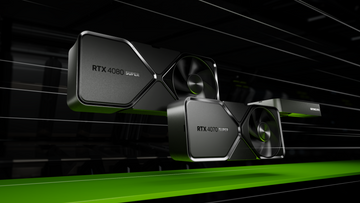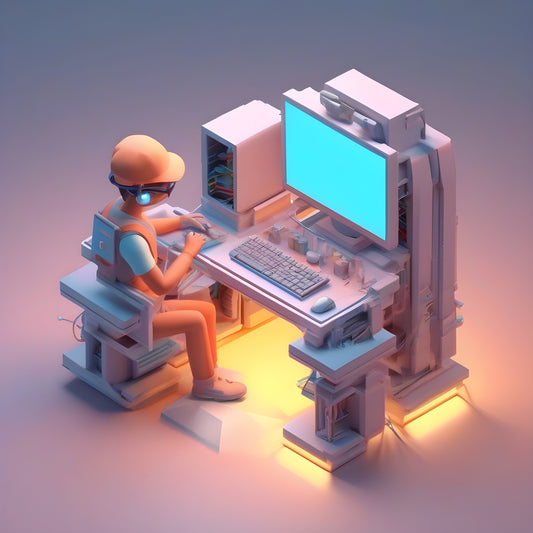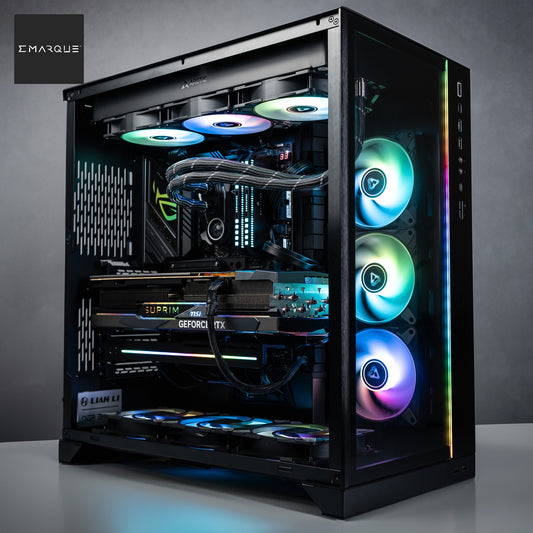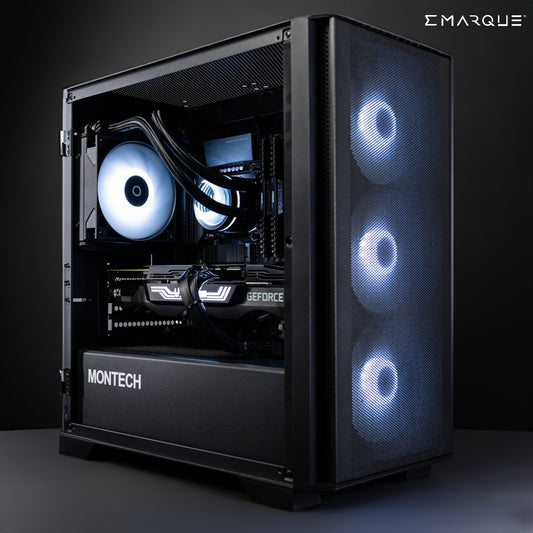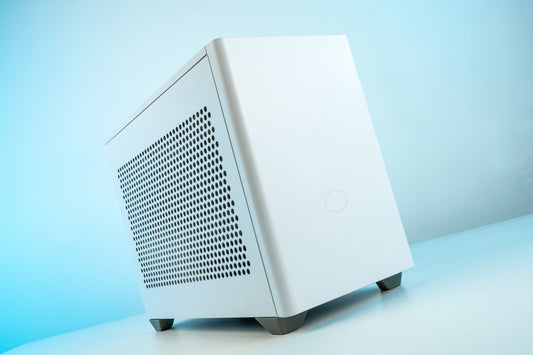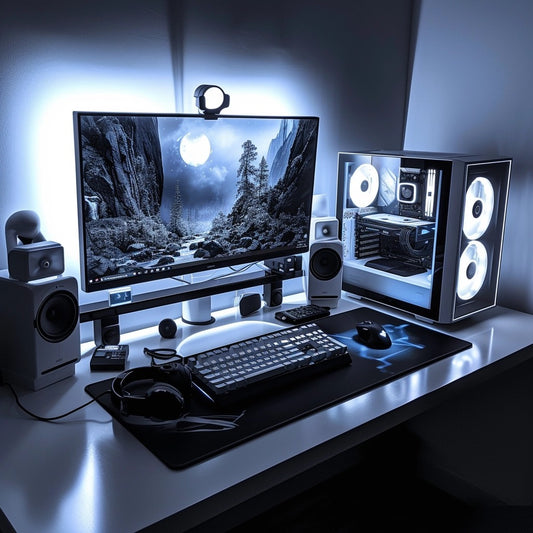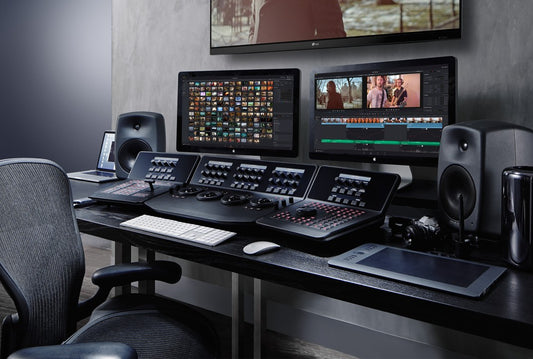Choosing the right specs for your PC BUILD

Are you looking to build your own PC but not sure where to start?
We will break down the essential components you need for a successful PC build, including the CPU, motherboard, RAM, storage, graphics card, power supply, and case.
Find out how to choose the right hardware for your needs, common mistakes to avoid, and tips on making the best decisions for your budget and future upgrades.
Learn everything you need to know about building your own PC!
Key Takeaways:
1. Determine your budget and needs before choosing hardware for your PC build.
2. Research and compare different brands and models, and ensure compatibility with your build.
3. Avoid common mistakes like overspending, ignoring future upgrades, and not researching enough.
What Is a CUSTOM PC Build?
A PC build refers to the process of assembling individual PC components to create a fully functional computer system, tailored to specific needs and preferences.
By embarking on a custom PC build, enthusiasts can reap a multitude of benefits. One key advantage is the flexibility it offers in selecting components that match the desired performance levels and budget constraints. Whether prioritizing high-end graphics cards for a seamless gaming experience or focusing on a robust CPU for demanding tasks, the customization options are virtually endless.
The satisfaction that comes from piecing together each component, from the motherboard to the cooling system, results in a deep sense of accomplishment and ownership. Not only does a personalized computer setup cater to individual requirements, but it also fosters a deeper connection with the system, enhancing overall user experience.![]()
What Are the Essential Components for a PC Build?
The essential components for a PC build include the motherboard, graphics card, CPU, RAM, storage (SSD/HDD), power supply, and case. Each component plays a crucial role in the overall performance and functionality of the computer system.
Starting with the motherboard, this central hub connects all components, facilitating communication and determining system compatibility. CPU, known as the computer's brain, processes instructions and affects overall speed. RAM, or random access memory, stores temporary data for quick access.
When selecting storage, consider speed and capacity; SSDs are faster while HDDs provide more storage. The graphics card (GPU) handles graphics rendering, crucial for gaming and visual tasks.
A sturdy power supply unit (PSU) ensures stable electricity distribution, while the case houses and protects all components, with factors like size, airflow, and aesthetics in mind.
CPU (Central Processing Unit)
The CPU, or Central Processing Unit, acts as the brain of the computer, executing instructions and performing calculations. Popular CPU manufacturers include AMD and Intel, offering a range of processors with varying performance levels and socket compatibility.
When considering a CPU for a PC build, it's crucial to look at key features like clock speed, core count, and cache size, as these directly impact performance. The socket type of the CPU must also match the motherboard to ensure compatibility. AMD processors typically offer better multi-threaded performance, making them ideal for tasks like video editing, while Intel CPUs often excel in single-threaded applications, such as gaming.
Advancements in CPU technology have led to energy-efficient processors that deliver remarkable processing power while consuming less power, contributing to better overall system performance and reduced energy costs. Benchmarking tools can help evaluate the performance of different CPUs, aiding in the decision-making process when choosing between AMD and Intel based on individual needs and preferences.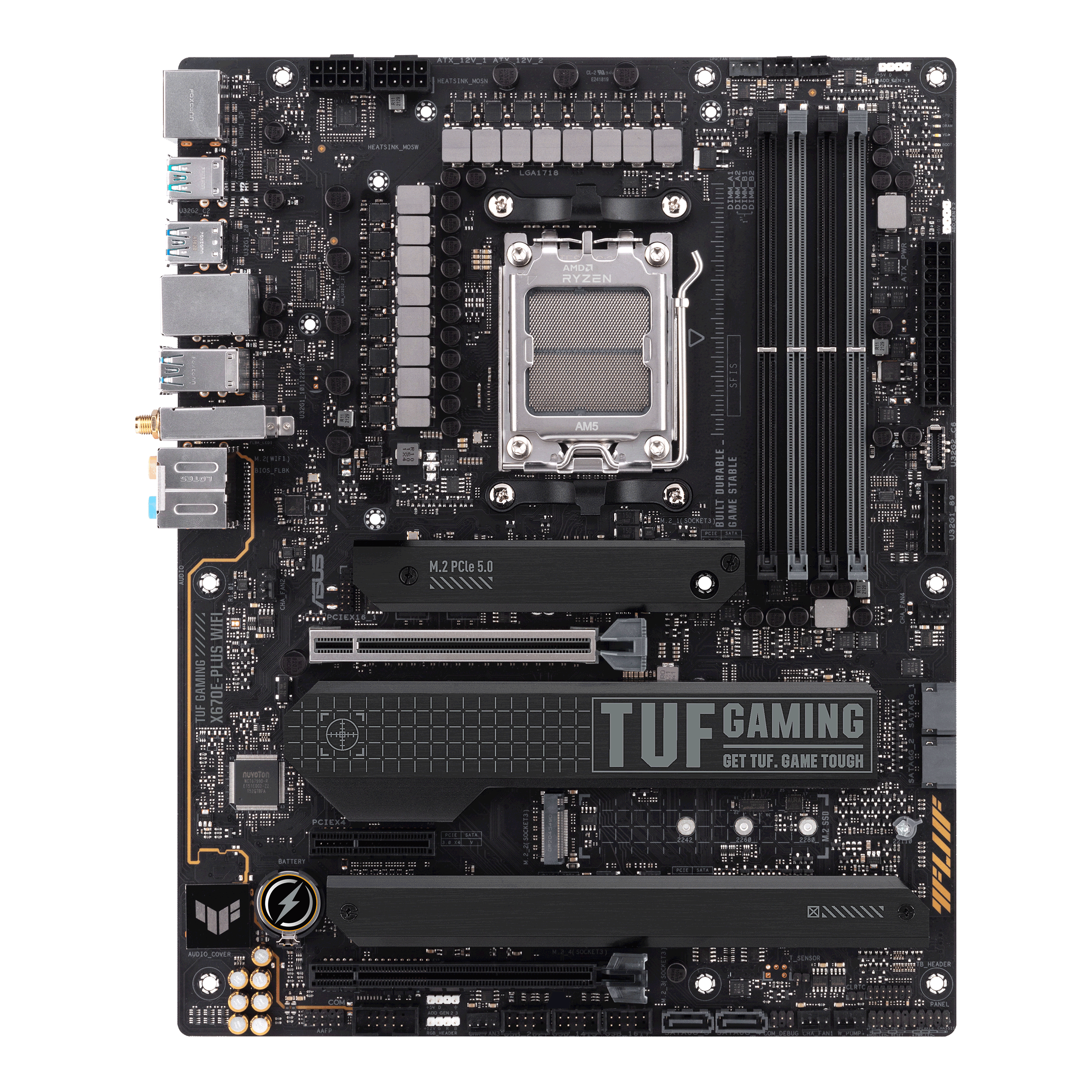
Motherboard
The motherboard serves as the foundation of a PC build, connecting all components and facilitating communication between them. It comes in various sizes, such as ATX, Micro-ATX, and Mini-ITX, to accommodate different build requirements and form factors.
Each motherboard size has its advantages; for instance, ATX boards offer more expansion slots and connectivity options, while Mini-ITX boards are compact and suitable for small builds. When choosing a motherboard for a specific CPU like an AMD Ryzen or Intel Core processor, compatibility is crucial. Ensure that the motherboard socket type matches the CPU socket to avoid any compatibility issues.
Compatibility
with other components like RAM, GPU, and storage drives is also essential, as they need to work seamlessly together for optimal performance.
RAM (Random Access Memory)
RAM, or Random Access Memory, is essential for temporary data storage and quick access by the CPU. It plays a critical role in multitasking, gaming performance, and overall system responsiveness. Both AMD and Intel platforms support various RAM configurations.
Regarding building a PC, selecting the right RAM can significantly impact the system's overall performance. The type of RAM you choose, such as DDR4 or DDR5, will determine the speed at which data can be accessed and transferred. Faster RAM speeds result in quicker loading times for applications, smoother gameplay experiences, and seamless multitasking abilities. Ensuring RAM compatibility with your chosen processor is crucial for optimal performance. Whether you opt for AMD Ryzen or Intel Core processors, having sufficient and compatible RAM can unlock the full potential of your system.
Storage
Storage devices, such as SSDs (Solid State Drives) and HDDs (Hard Disk Drives), store data and programs on a PC. SSDs offer faster read/write speeds and improved system responsiveness, making them popular choices for modern PC builds.
While SSDs excel in speed and efficiency, HDDs are known for their larger storage capacities at more affordable prices. The decision between them often boils down to the user's priorities. For tasks requiring rapid access to data, SSDs outshine HDDs, enhancing user experience and reducing load times.
Moreover, SSDs are less prone to mechanical failure since they lack moving parts, increasing their reliability and reducing the risk of data loss. Their durability makes them suitable for portable devices and laptops that may experience accidental bumps.
Graphics Card
A graphics card, also known as a GPU (Graphics Processing Unit), handles graphical processing tasks, including gaming visuals, video rendering, and image processing. AMD and Intel offer a range of GPUs with varying performance levels and price points.
When selecting a graphics card for a PC build, it's crucial to consider the impact it will have on your gaming performance and overall visual experience.
The GPU you choose determines how smoothly your games run, the level of detail in graphics, and the frame rates you can achieve.
High-quality graphics cards not only enhance your gaming experience but also play a significant role in productivity tasks like video editing and graphic design.![]()
Power Supply
The power supply unit (PSU) provides electrical power to all components in a PC build, ensuring stable operation and performance. When selecting a PSU, factors such as wattage, efficiency, and modular design should be considered for optimal power delivery.
One of the critical roles of the PSU is to convert the alternating current from the wall outlet into direct current that the components can use. This conversion process is crucial in providing consistent and reliable power to the motherboard, CPU, GPU, storage drives, and other peripherals.
An essential consideration when choosing a PSU is the wattage requirement, which is determined by the total power consumption of the components in the system. Overestimating or underestimating the wattage can lead to stability issues or inefficiency.
Efficiency ratings play a significant role in determining how much power is lost as heat during the conversion process. Opting for a PSU with higher efficiency ratings, such as 80 Plus Bronze, Silver, Gold, or Platinum, can help reduce energy waste and lower electricity bills over time.
Case
The PC case houses all components of a build, providing physical protection, cooling, and aesthetic appeal. Cases come in various sizes, designs, and form factors, such as full-tower, mid-tower, and mini-ITX, to accommodate different build preferences and component layouts.
When selecting the right PC case, one must consider factors like size, airflow, cable management, and aesthetics. Size plays a crucial role in determining the compatibility with components and available space for additional upgrades. Good airflow design ensures efficient cooling, preventing overheating and maintaining optimal performance. Effective cable management not only contributes to a clean and organized build but also aids in airflow optimization and maintenance accessibility. Additionally, aesthetics are important for personalizing the appearance of the build, reflecting individual style and preferences.
How to Choose the Right Hardware for Your PC Build?
Choosing the right hardware for your PC build involves considering factors such as budget, performance requirements, component prices, and compatibility with other parts. By assessing these criteria and following expert tips, you can create a balanced and efficient computer system.
One of the key aspects to keep in mind when selecting hardware components is the importance of thorough research and understanding your specific needs. It's essential to determine the primary purpose of your PC, whether it's for gaming, multimedia editing, or everyday tasks. This will help you prioritize which components, such as the CPU, GPU, RAM, and storage, are crucial for maximizing performance. Conducting a compatibility check is vital to ensure all parts work harmoniously together.
When diving into the world of AMD and Intel processors, it's essential to analyze benchmarks, user reviews, and future upgradeability. Opting for the latest technology within your budget can future-proof your system and enhance its longevity. Paying attention to factors like socket type, chipset compatibility, and power requirements is paramount. To fine-tune your selection process, consider creating a detailed table or list of preferred components, comparing their specifications, prices, and features to make informed decisions.
Determine Your Budget
Determining your budget is the first step in choosing hardware components for a PC build. Consider the total cost of all components, including peripherals and accessories, and align your budgetwith the performance level and features you desire.
Setting a budget not only helps in controlling costs but also ensures that you make informed decisions when selecting components. By allocating funds wisely across the CPU, GPU, RAM, storage, motherboard, power supply, and cooling solution, you can strike a balance between performance and affordability.
It is essential to prioritize components that have a significant impact on performance, such as the CPU and GPU, while still considering the quality of other parts to avoid bottlenecks or compatibility issues.
Consider Your Usage and Needs
Before choosing hardware components, assess your usage requirements and needs for the PC build. Determine whether prioritizing gaming performance, multitasking capabilities, content creation, or other specific tasks is crucial to tailor the build to your preferences.
For gamers, focus on high-end GPUs and CPUs for smooth gameplay with high graphics settings. For content creators, RAM and storage are key; opt for faster drives and ample memory. Everyday users might not require top-tier components, but should still consider a balance for reliable performance. It's important to understand the trade-offs in cost and performance to build a PC that fits your usage scenarios perfectly.
Research and Compare Different Brands and Models
Conduct thorough research and compare various brands and models of PC components to identify the best fit for your build.
Consider factors such as performance benchmarks, user reviews, reliability, and manufacturer reputation when making informed decisions.
When diving into the world of PC components, be sure to explore the offerings from AMD, Intel, and other leading manufacturers to gather a comprehensive view of available options.
Performance is paramount in ensuring a smooth computing experience, so look closely at key specifications like clock speeds, core counts, and cache sizes to determine which components best suit your needs.
Quality is another crucial aspect to consider - investigate the materials used, cooling solutions, and overall build quality to guarantee a durable and reliable system.
Check Compatibility
Ensure compatibility between hardware components by using online tools, motherboard specifications, and PC build guides. Check for factors like socket compatibility, RAM support, GPU clearance, and power supply requirements to prevent issues during assembly and system setup.
Checking the compatibility of components before embarking on a PC build project can save you time, money, and frustration in the long run. Socket compatibility is crucial to ensure that your CPU fits snugly into the motherboard without any issues. Understanding the maximum RAM supported by your motherboard helps you avoid purchasing incompatible memory sticks. Verifying the GPU clearance ensures that your graphics card fits inside the case without any obstructions. Checking power supply requirements is vital to ensure that your components receive adequate power for optimal performance.
Read Reviews and Ask for Recommendations
Seek out reviews, user feedback, and expert recommendations when selecting PC components for your build. Consider feedback on performance, reliability, compatibility, and value for money to make informed decisions and choose components that meet your specific requirements.
By leveraging insights from genuine reviews, you can tap into the real-world experiences of fellow users, helping you to understand the nuances of different components and how they perform in various setups. Turning to expert opinions and comprehensive buying guides can provide valuable context and detailed analysis to guide your choices.
Remember that each component in your PC plays a crucial role in determining the overall performance and functionality of your system. Prioritizing quality over pricing alone can prevent headaches in the long run and result in a stable, efficient build that caters to your unique needs and preferences.
What Are the Common Mistakes to Avoid When Choosing PC Hardware?
When choosing PC hardware, common mistakes to avoid include overspending on unnecessary components, neglecting future upgrade paths, ignoring compatibility issues, and not conducting sufficient research. By recognizing and addressing these pitfalls, builders can streamline the build process and optimize system performance.
One significant error many builders make is overspending on features that won't be utilized fully, draining budget resources unnecessarily. It's crucial to strike a balance between performance and cost, ensuring that each component adds tangible value to the system. Overlooking compatibility issues can lead to frustrating compatibility errors and system instability. Researching each component's compatibility with the motherboard, CPU, and other parts is key to a smooth build process.
Thorough research is essential to make informed choices. Compare prices, read reviews, and consider feedback from experienced builders to avoid common pitfalls. By taking these precautions, builders can create a high-performing PC without unnecessary expenses or compatibility issues.
Overspending on Unnecessary Components
One common mistake when choosing PC hardware is overspending on unnecessary components that exceed your budget or performance requirements. Avoid falling into the trap of buying high-end parts with features you may not utilize fully or benefit from in your intended usage scenarios.
It's essential to evaluate your needs and prioritize where to invest your budget for optimal results. Performance is crucial, but it doesn't always correlate with higher costs. Researching benchmarks and reviews can help you identify the sweet spot for price-to-performance ratio in components.
Consider future upgrades and compatibility to avoid premature obsolescence. Compare prices from different retailers and look out for sales or discounts to maximize savings. Don't overlook factors like warranties and customer support that add value beyond the initial purchase.
Not Considering Future Upgrades
Failing to plan for future hardware upgrades is a common mistake that can limit the longevity and upgradability of a PC build. Consider factors like socket compatibility, expansion slots, and future-proofing options when selecting components to accommodate potential upgrades.
Investing in a system with upgradeability and scalability ensures that your PC can keep up with evolving technologies without requiring a complete overhaul. By choosing components that offer compatibility with upcoming hardware releases, you can extend the lifespan of your build and avoid the need for frequent replacements.
Ignoring Compatibility Issues
Ignoring compatibility issues between hardware components, such as CPU, motherboard, RAM, and GPU, can lead to installation problems, performance issues, and system instability. Ensure thorough compatibility checks and research to prevent incompatibility-related setbacks during the build process.
When components are not compatible, it can result in failure to boot, crashes, or even damage to the hardware. To prevent these issues, compatibility checks must include comparing socket types, chipset compatibility, power supply requirements, and physical dimensions.
Double-checking specifications from manufacturers' websites or using online tools can verify compatibility for a smoother building experience. In case of discrepancies, consider BIOS updates, adapter cards, or selecting alternative components to resolve compatibility issues efficiently.
Not Researching Enough
Insufficient research before selecting PC components can result in suboptimal choices, mismatched hardware, and performance bottlenecks. Utilize online resources, expert advice, and buying guides to gather relevant information, compare options, and make informed decisions tailored to your build requirements.
By diving into specialized websites that offer detailed breakdowns of components, you can gain valuable insights into compatibility, performance benchmarks, and user experiences. Leveraging online forums and communities allows you to tap into the collective knowledge of enthusiasts and professionals, providing real-world feedback on various hardware setups.
Don't overlook the power of customer reviews and ratings on e-commerce platforms, as they often highlight common issues, strengths, and weaknesses of specific components. Seeking guidance from tech experts through consultations or online forums can offer personalized recommendations based on your specific use case and budget constraints.
Conclusion
Building a custom PC involves selecting and assembling the right components to create a system that meets your performance needs and budget constraints. By considering factors like compatibility, performance, and future upgrades, builders can craft a personalized computer setup that delivers optimal functionality and user satisfaction.
Ensuring that the motherboard, processor, RAM, storage drives, and graphics card work seamlessly together is crucial in achieving a stable and high-performing PC. Thorough research on benchmarks and reviews helps in making informed decisions to maximize the value of each component.
Setting a realistic budget is essential to prevent overspending and ensure that each component choice aligns with your financial boundaries.
Custom PC building not only offers the opportunity for tailored specifications but also enables cost-effective upgrades in the future, prolonging the system's relevance and performance.
Building a custom PC give the power tos users to create a machine that perfectly suits their needs - a truly personalized computing experience.
As you embark on your PC building journey, create a dedicated workspace equipped with essential tools such as a screwdriver, flash drive, organization supplies, light sources, anti-static wrist-strap, zip ties, and scissors. A well-prepared workspace ensures a smooth build process and minimizes the risk of component damage or mishandling.
Proper organization of your workspace is key to efficiency – consider using small containers or trays to sort screws and components by size and purpose. Keep your workstation clutter-free to prevent accidental damage or misplaced parts. Ensure adequate lighting to spot intricate connections and avoid strain on your eyes during long build sessions.
Frequently Asked Questions
What are the essential hardware components needed for a PC build?
The essential hardware components for a PC build include a CPU, motherboard, RAM, storage device, power supply unit, graphics card, and cooling system.
How do I determine which CPU is best for my PC build?
When choosing a CPU for your PC build, consider factors such as budget, intended use, and compatibility with other components. Research and compare specifications and performance benchmarks to determine the best fit for your needs.
What should I consider when selecting a motherboard for my PC build?
When selecting a motherboard, consider the CPU socket type, form factor, RAM compatibility, expansion slots, and features such as overclocking capabilities and built-in Wi-Fi. It's also important to ensure compatibility with your chosen CPU.
What type of RAM should I choose for my PC build?
The type of RAM you choose for your PC build will depend on the type of motherboard and CPU you have selected. Consult the motherboard and CPU specifications to determine the appropriate type and speed of RAM.
Should I prioritize a higher graphics card or a better CPU for my PC build?
This depends on your intended use for the PC. If you will be using it primarily for gaming or graphic design, a higher graphics card may be more important. If you will be using it for tasks such as video editing or programming, a better CPU may be a better investment.
Do I need to purchase a separate cooling system for my PC build?
This will depend on the type of CPU and graphics card you are using, as well as the airflow and ventilation in your case. If you plan on overclocking or using high-performance components, a separate cooling system may be necessary to ensure proper cooling and prevent overheating.


